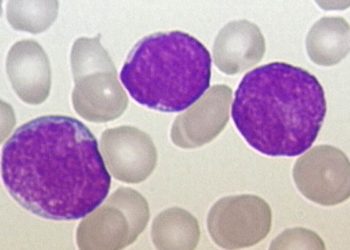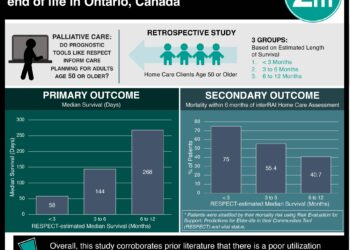Palliative care consultation linked to lower deaths by failed code resuscitation
1. Among deaths at one, large children’s hospital, the most common mode of inpatient death was withdrawal of life sustaining technologies, followed by nonescalation of care during or at the time of death, and failed resuscitation (code).
2. Older children, neonates, and children with malignancies were significantly more likely to receive palliative care consultations. For patients with palliative care consultations, withdrawal and nonescalation were the most common modes of death.
Evidence Rating Level: 4 (Below Average)
Study Rundown: Most pediatric deaths across the United States occur in hospitals, but little is known about how these children die and what role withdrawing/withholding life sustaining technologies plays in those deaths. The objective of this retrospective chart review was to characterize the mode, location, and role of palliative care in inpatient pediatric deaths at the Children’s Hospital of Pennsylvania (CHOP). The majority of inpatient deaths occurred in the intensive care unit (ICU) setting. The neonatal ICU (NICU) was the most common location of inpatient deaths, followed by the cardiac ICU (CICU), and pediatric ICU (PICU). The most common mode of inpatient death was withdrawal of life sustaining technologies, followed by nonescalation, and failed resuscitation. Withdrawal only occurred in ICU and operative settings. Palliative care consultations (PPCs) occurred in most non-ICU deaths and were more common in older patients and patients with malignancy. Code deaths were less likely to be seen in patients with PPCs. Additionally, African American patients were more likely to experience a code death than white within the first 24 hours of admission. Limitations of this study include data from only a single hospital and exclusion of deaths at home that may have occurred after discharge. For clinicians, key takeaways include significant differences in modes of death for patients with and without PPCs, as well as disparities in how likely African American children die in hospitals compared to white patients.
Click to read the study, published today in Pediatrics
Click to read the accompanying editorial in Pediatrics
Study Author, Dr. Chris Feudtner, MD, PhD, MPH talks to 2 Minute Medicine: Department of Pediatrics, Children’s Hospital of Philadelphia, Philadelphia, Pennsylvania.
“One of the most important duties of children’s hospitals is to make sure that we provide, whenever a child or adolescent requires, the best palliative and end of life care possible. This study helps us to better understand the circumstances in the hospital in which such care is needed.”
In-Depth [cross-sectional study]: This study retrospectively evaluated all inpatient deaths at CHOP over a 3-year time period. Of the 585 deaths that occurred during this window, 579 were included in the final analysis (mean age of death was 3.95 ± 6.75 years, 348 (60.1%) of patients were <1 year of age, 290 (50.1%) were male and 137 (23.7%) were Black or African American). Most patients had a complex chronic condition at time of death (n=495, 85%), with cardiovascular (n=258, 44.6%) being the most common category followed by congenital/genetic defects (n = 145, 25%). The most common location of death was in the ICU setting (n=429, 74.1%). The NICU, PICU and CICU comprised 29.7%, 27.8% and 16.6% of those deaths, respectively. The most common mode of death across all units was withdrawal (n=233, 40.2%), followed by nonescalation (n=148, 25.6%) and code (n=132, 22.8%). Withdrawal occurred only in ICU or operative settings, with the NICU being the most common setting (68.6%), followed by the CICU (47.9%) and PICU (40.4%). Out of all deaths, PPC was ordered for 187 (32.3%), with the highest rates seen in oncology (89.5%), followed by non-ICU ward (66.7%), CICU (38.5%), PICU (37.3%), and NICU (27.3%). Patients with malignancy (OR=12.01; 95%CI 5.53-26.1), older age (OR=9.5; 95%CI 2.72-33.5), and neonates (OR=2; 95%CI 1.05-3.80) were more likely to receive PPC. In the setting of PPCs, nonescalation (48.1%) and withdrawal (35.1%) were the most common mode of death. Additionally, when controlling for age, race, and length of stay, patients with PPCs were less likely to experience a code death compared to those without a PPC (aOR=0.31; 95%CI 0.13-0.75). Patients with nonescalation deaths were also more likely to have a PPC (OR=5.02; 95%CI 2.77-9.10). Finally, multivariate analysis showed the African American patients were significantly more likely to experience death by code compared to white patients (aOR=2.46; 95%CI 1.05-5.73).
Image: PD
©2018 2 Minute Medicine, Inc. All rights reserved. No works may be reproduced without expressed written consent from 2 Minute Medicine, Inc. Inquire about licensing here. No article should be construed as medical advice and is not intended as such by the authors or by 2 Minute Medicine, Inc.







